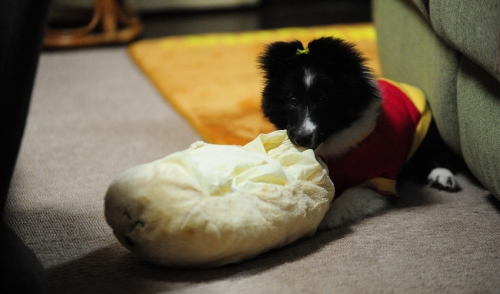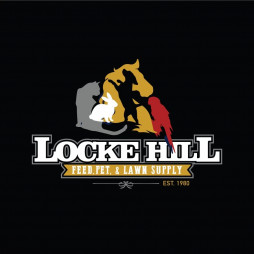
How to Control Bad Dog Behavior
Every dog owner wants their canine companion to be well-mannered and obedient, but there will always be times when a dog's behavior is anything but perfect. Learning how to control bad dog behavior is essential to properly train your pet and teach it how to recognize and fulfill your expectations of being a "good dog."
Types of Bad Dog Behavior
There are many different dog behaviors that may seem bad. Just how bad the behavior is depends on a range of factors, such as…
- Breed – Some dogs are known for "bad" behaviors such as digging, excessive barking, etc.
- Age – Unwelcome behaviors are often more common among puppies or elderly dogs
- Training – Some behaviors are easily changed with training, if that training is properly applied
- Situation – Bad behavior varies with a situation, such as barking without cause or at an intruder
- Owner Preferences – What may seem bad to one owner is not a problem to another
In general, dog behavior is considered bad if it is excessive and unwelcome, despite attempts to correct the dog. While not every dog will exhibit all potentially bad behaviors, different types of bad behavior can include…
- Barking
- Jumping up
- Begging
- Whining
- Digging
- Counter-surfing
- Biting or nipping
- Chewing
- Leash pulling
- Chasing
- Urine marking
While the occasional incident with any of these behaviors is not usually a problem, ongoing, repeated behavior can be a challenge to correct. Fortunately, there are ways to help control a dog's bad behavior.
Controlling Dog Behavior Problems
The first step in controlling poor behavior is determining the cause of the dog's reaction. Different medical conditions could lead to poor behavior, such as a dog with an ear infection being more sensitive to noises and barking in protest, or a dog with a bladder infection urinating more around the house. Stress, anxiety or unfamiliar stimuli could also trigger bad behavior. Once the source of the poor behavior is discovered, it is possible to control the dog's response with different techniques, such as...
- Prevention
If you know the trigger for your dog's bad behavior, it may be easy to remove that trigger. For example, replace a doorbell when the sound triggers barking, do not give your dog table scraps to prevent begging or keep your dog out of the kitchen if counter-surfing is a problem.
- Know Your Dog
In some cases, bad behavior may be because you aren't aware of your dog's needs. A puppy or senior dog that may pee in the house could benefit from more frequent bathroom breaks outside. Recognizing your dog's signals can help you learn what it needs so you can help it avoid behaving badly.
- Exercise
Some bad behavior, such as digging or chasing, can be the result of pent-up energy. Giving your dog more exercise can help burn off energy so your dog isn't tempted to behave poorly, and will reinforce your bond with your pet so it will be more likely to pay attention to you and obey your commands.
- Ignore the Behavior
Many types of bad behavior are intended to get attention, such as jumping up, barking or begging. If you ignore the behavior, the dog will not get the attention it is seeking, and its behavior will eventually change. This includes not shouting or punishing the dog's actions, because even bad attention is still attention the dog wants.
- Redirection
Some behavior that may seem bad is actually instinctive for a dog, such as chewing and digging, and it may be impossible to completely stop the behavior. Instead, redirect the dog to more appropriate choices, such as providing safe chew toys or permitting digging in one specific spot to spare the rest of your possessions and yard from unwanted attention.
- Stay Calm
No matter what your dog's bad behavior, it is important to stay calm. Your excitement, even if it is shouting or gesturing because you're angry or upset, could be seen as play or encouragement, something your dog will enjoy. Instead, keep your voice low and level, your gestures slow and deliberate and all your actions calming to help calm your pet.
- Interrupt Commands
When your dog is doing something bad, it can be helpful to have an interrupt command the dog is trained to obey. You may use "Stop!" "No!" "Drop it!" or "Leave It!" to get your dog's attention and let them know their behavior is unacceptable. A harsh, loud tone of voice will help reinforce the meaning of the command and teach your dog to cease and desist.
- Socialization
With some behaviors, socializing may be all that's needed to correct the behavior. The more accustomed the dog is to different sounds and scents, the less likely the dog is to overreact at a new sensation. More exposure will help your dog become acclimated to different surroundings so any bad behavior is minimized.
- Practice
Regularly reinforcing training with your dog will help them stay bonded to you and recognize you as an authority figure, which can help minimize bad behavior when you give commands or use other techniques to discourage different actions. The key is to always be consistent, and all family members should use the same techniques to halt bad behavior.
- Work With a Trainer
In extreme cases, it may be necessary to work with a trainer to try and curb a dog's bad behavior. A trainer can offer you several options for controlling unwanted behaviors, and can help you find what will work best for your dog to stop them from unwelcome actions.
It's important to note that while you may want your dog to be well behaved at all times, there may always be accidents or slips in discipline. The key is to keep working with your pet and minimizing problems, and the occasional bad manners or bad behavior won't be as disruptive.
